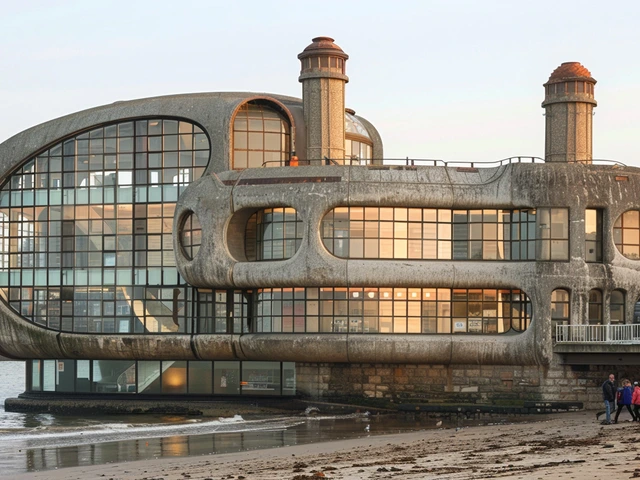Introduction to Constructivist Architecture
Constructivist Architecture emerged in the wake of the Russian Revolution, offering a radical approach that intertwined technology, engineering, and art to serve the needs of the community rather than mere aesthetic preferences. Its proponents believed in the idea of 'construction art,' which emphasized the practical aspects of architectural design to revolutionize living spaces, making them more functional and accessible. This movement grew not just in Russia but also inspired architects around the globe, becoming a cornerstone of modern architectural practices.
The Philosophical Underpinnings
At its core, Constructivist Architecture was not just about buildings. It was about a vision for society. Architects like Vladimir Tatlin and El Lissitzky saw themselves as social engineers, crafting spaces that would foster communal living and support the ideals of a new socialist society. This vision led to the creation of designs that were innovative, utilitarian, and ahead of their time, pushing the boundaries of traditional architectural design.
Key Characteristics of Constructivist Design
The hallmark of Constructivist Architecture lies in its bold geometric forms, use of modern materials like steel and glass, and the integration of structural and aesthetic elements. The designs often featured dramatic angles and intersecting planes, emphasizing a dynamic interplay of forms. This was not architecture for the sake of beauty alone; every element served a purpose, combining functionality with an avant-garde aesthetic.
Iconic Examples of Constructivist Buildings
Some of the most remarkable examples of Constructivist Architecture include the Narkomfin Building in Moscow, designed by Moisei Ginzburg and Ignaty Milinis, and the Rusakov Workers' Club in Moscow, designed by Konstantin Melnikov. These structures showcased innovative approaches to communal living and social spaces, redefining how architecture could serve the public good.
Influential Proponents of Constructivism
Constructivist Architecture was driven by visionary architects who challenged conventional norms. Figures like Vladimir Tatlin, with his Monument to the Third International, and El Lissitzky, with his Proun series, were instrumental in pioneering this movement. Their work not only shaped Constructivist Architecture but also left a lasting influence on the development of modern art and design.
The Influence on Global Architectural Practices
The principles of Constructivist Architecture extended far beyond Russia, influencing architectural movements worldwide. Its emphasis on functionality, combined with aesthetic innovation, laid the groundwork for later movements, including Brutalism and Structural Expressionism. This global impact showcases the enduring legacy of Constructivist principles in shaping contemporary architecture.
Challenges and Criticisms
Despite its innovative vision, Constructivist Architecture faced challenges related to practical implementation and political opposition, particularly within the changing political climate of the Soviet Union. Critics argued that while the ideas were revolutionary, some projects were unfeasible or lacked consideration for the occupants' comfort and lifestyle. This tension between idealism and reality is a crucial aspect of the movement's history.
Legacy and Relevance Today
Today, Constructivist Architecture is celebrated for its radical approach and contributions to modern architecture. Its focus on community, functionality, and innovation continues to inspire architects and designers. As we look towards the future of urban planning and building design, the lessons from Constructivist Architecture remain highly relevant, reminding us of the power of visionary design to shape society.





Leave a Comments